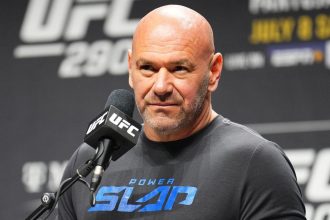The National Retail Federation (NRF) just released its 2024 Winter holiday season forecast and predicts core retail, excluding motor vehicles and parts stores, gasoline stations and food service, will advance between 2.5% and 3.5% in November-December to reach an all-time high between $979.5 billion and $989 billion, compared with $955.6 billion last year.
Stressing that the economy remains “fundamentally sound,” NRF CEO Matthew Shay said in a statement that retail will continue to “maintain its momentum heading into the final months of the year.” And NRF chief economist Jack Kleinhenz added, “We remain optimistic about the pace of economic activity and growth projected in the second half of the year.”
Since core retail has advanced 3.3% through September, according to the Census Bureau’s Retail Trade Survey, the low end of its holiday forecast implies a slowdown rather than continued momentum.
Complicating the outlook further is the upcoming highly contentious election and the fact that this year’s prime holiday shopping season from Black Friday to Christmas Eve is five days shorter than last year. And dark clouds hang over consumer confidence as shoppers find themselves battered and bruised by inflation and an uncertain future.
Retailers face a complex and challenging environment with wild cards stacked in the holiday deck. Given the uncertainties, the retail industry will be lucky to meet the 2.5% lower end of NRF’s forecast.
Election Interference
Based on historical precedents from the 2016 and 2020 election years, the Boston Consulting Group (BCG) in its “Deck the Halls Differently for 2024 Holiday Retail Success” report, found virtually no impact on holiday spending. While it negatively impacts consumer confidence for the losing party, consumer holiday shopping continued to hold up.
BCG’s managing director and partner Mrin Nayak, who headed up the holiday research, explained that the drop in confidence only impacts the losing party, so it is partisan rather than bipartisan as experienced through other consumer-confidence shaking events, like the 2009 financial crises and the pandemic.
“Given this precedent, it is reasonable to predict that the election will have little ultimate impact on consumer spending, regardless of the outcome—but it could affect who is doing the spending, and when,” she explained.
I went back further to the 2020 Gore-Bush election when final election results were delayed. Core retail sales in November-December rose 6% that year, despite the “hanging chad” controversy.
Yet, I don’t recall anywhere near the passion for either Gore or Bush that we are seeing behind Trump and Harris. If the election is as close as the pollsters predict, a delay in announcing the election results or another round of controversies surrounding the election process could distract a good 50% of shoppers and put them off shopping for a time.
Regarding the election, the NRF stated, “It is nearly impossible to measure its impact on current or future spending.”
The more controversial the election results are, the more the shortened holiday shopping season could drag on retail sales.
Into The Fourth Quarter
Despite NRF’s talk of consumer spending momentum, only one retail sector drove overall growth through the past three quarters: nonstore and e-commerce retail, core retail’s largest sector. Nonstore retail was up 8.2% to $1.1 trillion.
Other sectors are tepid at best, especially considering that inflation was running over 3% until June. For example, food and beverage stores, the second largest sector, was up 2% to $739 billion, and number three general merchandise retailers rose 2.8% to $658 billion.
NRF predicts holiday online sales to increase between 8% and 9%, a fair bet given its performance through the first three quarters. But the shortened selling period puts extra pressure on this sector for speedy shipments.
“Timing matters, though—direct, social media, and emerging marketplace channels see the most strength early in the holiday shopping season,” Nayak explained, citing Temu and Shein as emerging marketplaces.
BCG research finds shopping behavior differs between early shoppers who can more leisurely search for that “perfect gift” versus those who wait until peak period from Black Friday through Christmas Eve.
“Later in the season, shoppers will insist on the predictable fulfillment and competitive prices that mega-retailers and platforms are better known for. Leaning into fast-fulfillment advantage can help capitalize on consumers seeking rapid shipping to ensure gifts arrive in time,” she advised.
The BCG research also found increased importance of weekdays for holiday shopping, especially online, whereas in the past, more holiday shopping was done on the weekends.
“E-commerce has continued to grow, and the prominence of online channels is 1.4x higher during weekdays. This raises the stakes for digital experiences Monday through Friday, “ she related.
“Winning the holiday season and achieving growth targets in 2024 and beyond will rely more on weekday success online than on record in-store days on the weekend.”
Missing Five Days
The compressed holiday season makes each and every day from now until Christmas Eve critical. While the NRF reports that about 45% of consumers plan to start holiday shopping before November, one wonders if shoppers are aware they will have five fewer shopping days after Thanksgiving this year.
Retailers would do well to remind them because their daily sales will need a boost to make up for the five-day shortfall.
While this year the holiday shopping season is unusually short, it was unusually long last year. That worked in Target’s favor.
In the fourth quarter 2023, Target added an extra $1.7 billion in revenues, giving it a much-needed boost to end the year down less than 2%. Without it, Target would have experienced over a 3% revenue decline.
And Target is getting a jump on the season with big holiday promotions planned around the release of Wicked and a new exclusive Taylor Swift album and book release on Black Friday. Plus Target just announced it reduced prices on more than 2,000 items for holiday gifting and celebrations.
Consumer Confidence Down
Capping all the other unknowns for this holiday season is the seven-point drop in consumer confidence reported in September by the The Conference Board when all five components of the Consumer Confidence Index plunged.
Yes, as Shay said, “The winter holidays are an important tradition to American families,” yet, across the other holiday celebrations this year, NRF’s spending expectations haven’t matched those from the previous year.
For example, Halloween spending was projected to drop from $12.2 billion in 2023 to $11.6 billion this year, a 5% fall. Easter spending was expected to be down 7% and Mother’s Day off 6%.
If holiday spending is a measure of how confident, festive and celebratory consumers feel, then retailers have their work cut out to match or exceed results from last year.
One wonders if they cut back on other holiday spending to save up for this season or whether they just didn’t feel much like celebrating this year. Hopefully, the gloom will lift for this holiday season.
The Race Is On
“For retailers in the United States, the holiday cheer will be present but measured for 2024,” BCG reports. “It’s a different kind of year. While consumers will have divided attention in the coming months, retailers across all channels should ready the sleigh, because conditions call for a fast, exhilarating ride as shopping begins.”
BCG sees many consumers tightening their budgets for holiday shopping. That will turn many into deal-seekers and make them more “intentional” about where they shop.
BCG advised:
“The 2024 Holiday season in the U.S. will accelerate quickly, right out of the gate. With hilly, twisty terrain ahead across a compressed peak-season calendar and election-related distractions, it’s important to be ready with speed and agility alike.
“With the right approach, retailers can look forward to a season of cheer, despite a moderate growth outlook for U.S. consumers’ holiday spending.”
See also:
Read the full article here





